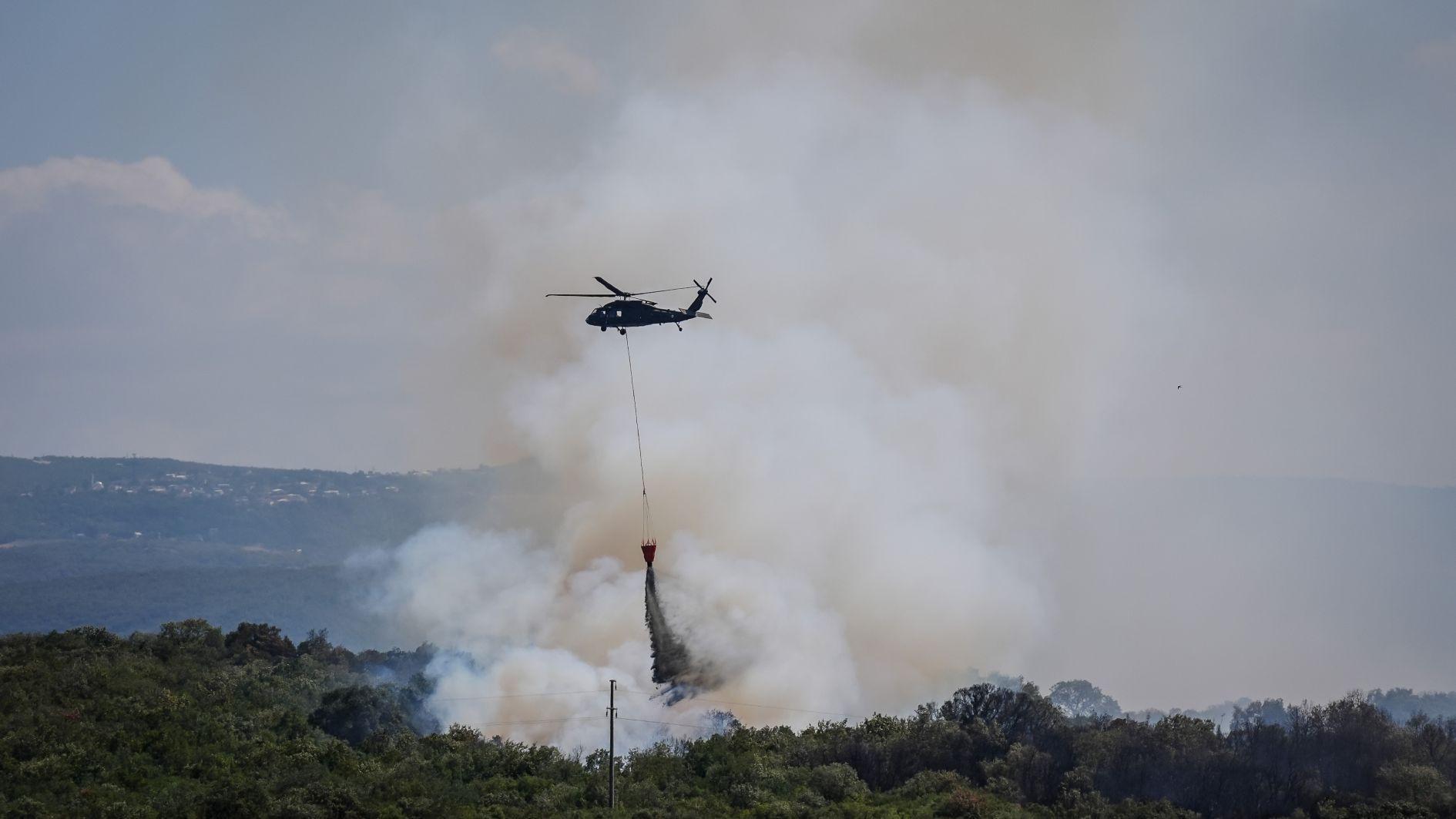
Firefighting pilots recount how wildfires across Türkiye turned into “mega-fires” this summer, with flames soaring to unprecedented heights and spreading at explosive speed.
This summer, hundreds of small and dozens of large fires swept across the country, threatening homes and forests from the Aegean to the Marmara.
As the flames raged, questions resurfaced about whether Türkiye’s aerial firefighting fleet is strong and flexible enough to keep pace with an intensifying wildfire season — and what it actually took for pilots to contain so many blazes.
Among those on the front line is Burhan Güler, chief pilot of the fleet of AT-802 Fireboss, a single-engine amphibious plane, under the forestry authority.
With 26 years of military flying experience, he said this year was unlike any before.
“After seven years of fighting fires, this was the first time I saw flames 50 meters high,” he told daily Hürriyet.
“Our job is to slow the blaze so ground teams can attack. We dive to within 20 meters to drop water. Sometimes you come out of the smoke thinking, ‘we survived again.’”
According to Güler, the challenge is not just the flames themselves but the landscape they sweep across.
Türkiye’s rugged terrain, he explained, rules out the massive water bombers used in the United States.
“Large planes cannot maneuver here. With the AT-802, we can get close and precise,” he explained.
Helicopter crews face equally perilous missions.
Emrah Yetişir, a former army pilot now flying Sikorsky T-70 helicopters, compares the experience to combat.
“At night, only five helicopters are equipped to fly, and it is much riskier,” he noted. “But whether day or night, you are face to face with the fire. Sometimes you stop on one side and the blaze leaps to another. In [the northwestern city of] Çanakkale, we saw how fast it could outrun us.”
Since January, Türkiye has deployed 105 helicopters, 27 planes and 14 drones, dropping over 161,000 tons of water.
The country is also the first in Europe to use drones in wildfire management, scanning millions of hectares for early detection.
Still, officials stress that prevention matters most.
“The leading cause of fires is people, through negligence, accidents or intent,” said Forestry Director-General Bekir Karacabey.
According to Karacabey, the strongest measure is action before fire begins.
But with climate conditions worsening, above 30 degrees Celsius heat, intense humidity and persistent winds, pilots warn that even a spark can unleash a blaze beyond control.
They call this summer’s blazes “mega-fires,” yet every flight reveals their relentless drive to protect homes, forests and lives, turning each mission into a battle for both their country and the world.